Art
What Makes a Minimalist Sculpture Good?
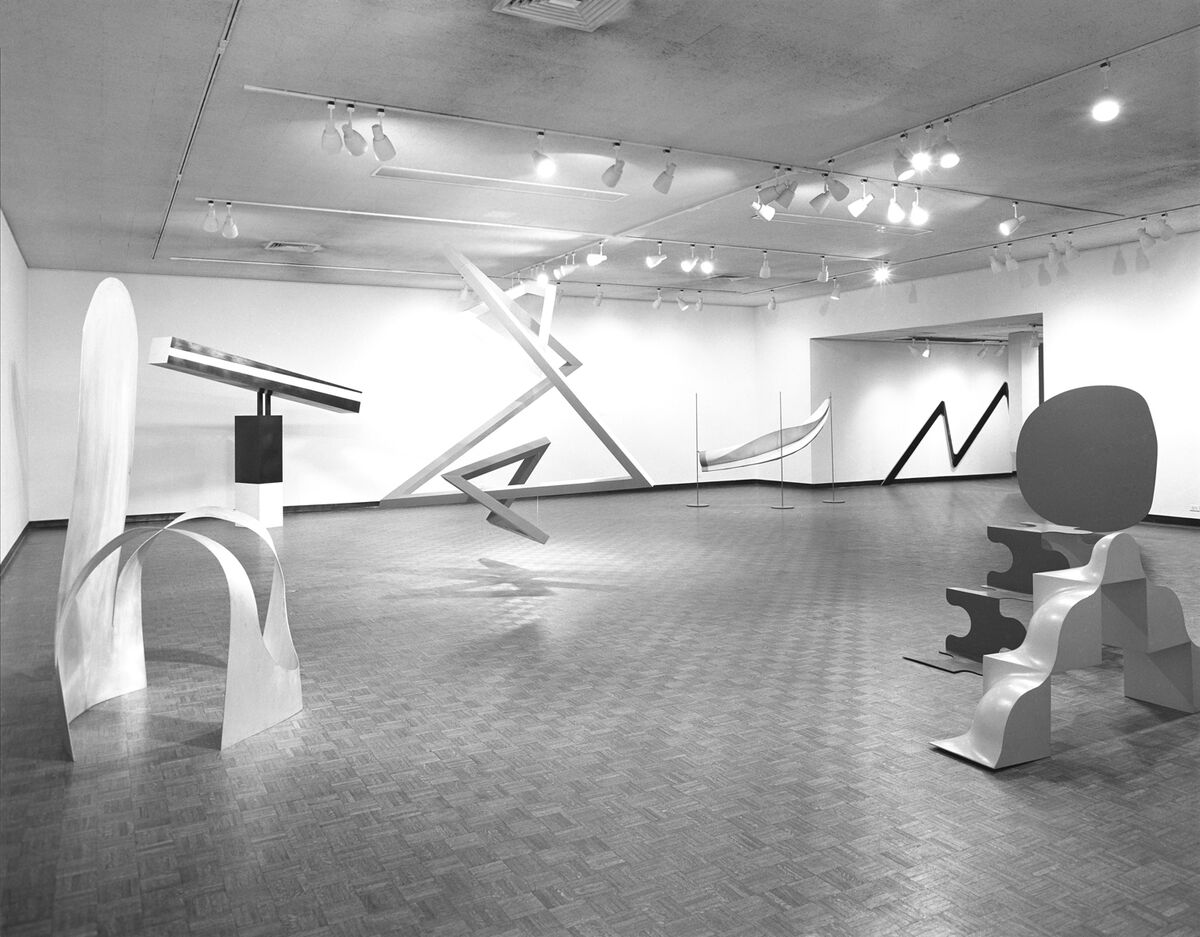
Installation view, Primary Structures: Younger American and British Sculptors, The Jewish Museum, 1966. Courtesy of The Jewish Museum.
Few exhibitions define a movement the way the Jewish Museum’s 1966 show “Primary Structures” outlined the parameters for
sculpture. Two years earlier, the artist
had begun hiring fabricators to construct box-shaped sculptures comprised of industrial materials. The same year,
exhibited fluorescent light sculptures at the Green Gallery on West 57th Street. By the end of 1964, the emergence of a new visual language was spreading through Manhattan. For “Primary Structures,” curator Kynaston McShine, who died this past January, assembled work by a group of 42 artists from America and Britain. The show suggested a shift: from privileging gestural abstractions and
paintings to celebrating pared-down forms in three dimensions.
’s contribution, Lever (1966), consisted of 137 bricks laid in a line along the floor.
’s Cage II (1965) resembled a narrow, upright cell.
’s Untitled (1966) was an open white cube divided into many interior cubes. And the title for Flavin’s sculpture was infinitely more complex than the work itself, a simple arrangement of red fluorescent lighting tubes: A Corner Monument for Those Who Have Been Killed in Ambush (for the Jewish Museum) (to P.K. who reminded me of death) (1966). McShine’s curatorial coup attempted to establish this radical new art as not only valid, but good.
Not everyone agreed, nor liked the show. Judd, who exhibited two works himself, was unequivocal about his dissent. “I hated the Primary Structuresshow at the Jewish Museum in 1966, both itself and its title—‘primary’ sounds Platonic,” he wrote in the appropriately titled essay “Complaints: Part 1” in 1969. He didn’t believe that all 42 artists belonged in a single, unifying group. Judd didn’t even like being called a “Minimalist.”

Sol LeWitt
Cube, 1979
Phillips
In the seminal 1967 essay “Art and Objecthood,” critic Michael Fried argued that good art itself was at odds with much of this new Minimalist work. Its creators, he believed, were simply making objects that established a sense of theater as viewers were forced to engage with them over time. Fried explicitly outlined “the need to defeat theatre,” calling for an end to Judd-esque approaches (in “Primary Structures,” the artist had shown two works, both a series of connected metallic boxes).
The advocates of the nascent movement would argue that Minimalist sculpture is valuable for just that reason: The “best” of this work asks viewers to reconsider the environments they encounter everyday. For example, some of Andre’s sculptures lie on the floor, inviting their audience to tread on the art. The works blur the boundary between art and architecture, what’s revered or neglected in our surrounding spaces. Same goes for Judd’s shelf-like boxes that ask, in part, where furniture ends and fine art begins. Many of the Minimalist sculptors integrated ordinary materials more associated with construction than fine art into forms that evoked less hallowed professions than the quintessential, marble-carving “sculptor.” They innovated by challenging preconceived notions of how to experience space, materials, institutional settings, and the structures with which we interact on a daily basis.
The era’s most famous critic, Clement Greenberg, didn’t much care for Judd nor for Minimalism, and Judd, predictably, retaliated: “Clement Greenberg’s dogmatism finally discredited serious art criticism,” he wrote in 1984 essay entitled “A Long Discussion Not about Master-Pieces But Why There Are So Few of Them: Part II.”
While this kind of intellectual jousting is, for the most part, a relic of the macho New York art world past, curators still struggle to articulate why one Minimalist sculpture may be better than another.
Courtney J. Martin, deputy director and chief curator at the Dia Art Foundation, offers a very technical assessment of what makes a Minimalist sculpture good. “Let’s start with something that’s really boring and basic,” she told Artsy. “Is it stable as material? Can it stand up to being shown publicly? Until relatively recently, we didn’t really turn to thinking about conservation issues related to this period of art.”
Despite the apparent simplicity of Minimalist art, it’s proven difficult to preserve. Post-war plastics (as in the shimmering, jewel-toned work of
or
’s twisting, snakelike black forms) are a curatorial nightmare. According to Martin, plexiglass becomes yellow and brittle in a way that institutions still aren’t equipped to handle. Many Minimalist sculptures are losing their aesthetic (and monetary) value as they decay in challenging new ways.
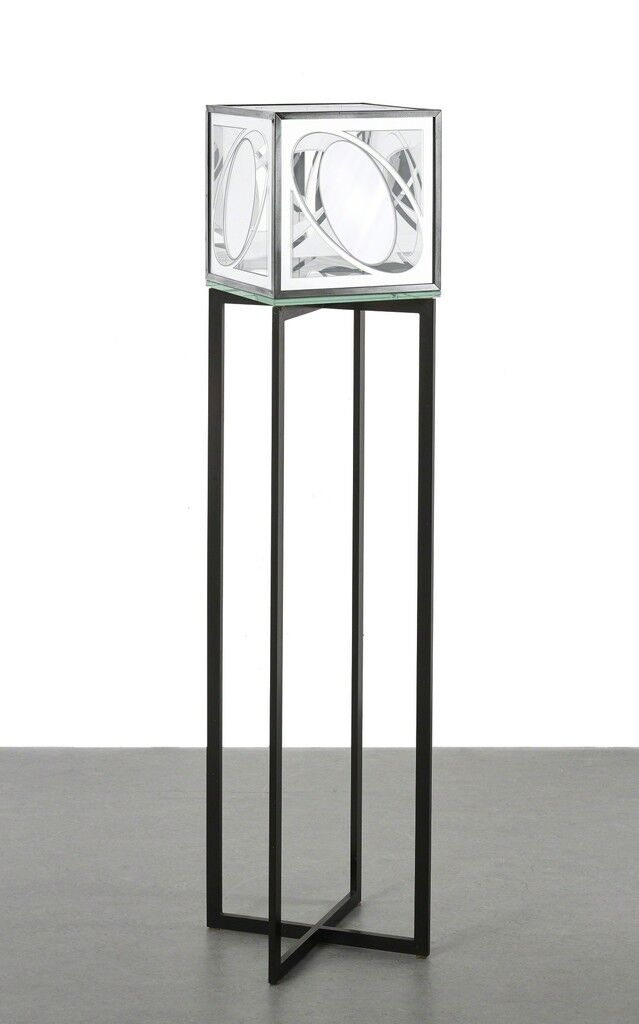
Larry Bell
Eclipse, 1965
Sotheby's: Contemporary Art Day Auction
Dia is notable for its Minimalist holdings and recently acquired six new sculptures by one of the three women from the male-dominated “Primary Structures” roster:
. (Tina Spiro and Judy Cohen Gerowitz—who later went by the name
—were the other two.) Martin notes how Truitt remained an outlier to Minimalist circles throughout her life. She was based in Washington, D.C., away from the close-knit artist communities in New York and Los Angeles. Unlike most Minimalist sculptors, Martin says, “[Truitt] was so concerned with being a painter. She’s interested in how color takes place across her form, not just breaking across canvas.” Truitt layered her paint over vertical wooden boxes, distinguishing her process from the more industrial, impersonal strategies that many of her contemporaries relied on. If Minimalist work could be cold, Truitt’s always evidenced a human touch.
Based in Laguna Beach, gallerist Peter Blake offers a perspective on Los Angeles’s strand of Minimalist sculpture, which developed a bit differently than its East Coast counterpart. Blake has shown work by such local figures as
,
,
, and
. Both men were included in “Primary Structures” and all four artists belonged to the
movement, which fit under the larger umbrella of Minimalism and aimed to harness light in new ways. These artists often focused on perfecting the painted surfaces of their sculptures, creating a smooth, sleek “finish fetish,” a term coined by British photographer John Coplans in the late 1960s.
While New Yorkers battled over conceptual issues, the apparently more laid-back Californians considered sun, surfing, and car culture: the glimmer of the ocean, the slick surfboards, and the sheen of their vehicles all appealed. “These artists had begun working with different products that were part of their world,” says Blake. “They put away the brush and weren’t interested in painting people or trees, but…in how to harness California light.” Instead of asking viewers to reconsider furniture, electrical wiring, or the floor (as the East Coasters did), this branch of Minimalist sculptors examined the way that art could change a viewer’s understanding of illumination and darkness, both natural and synthetic.

Kitty Kraus
Untitled, 2012
kestnergesellschaft
McCracken created glossy, reflective polyester resin planks that leaned lazily against a gallery wall. Bell made glass cubes that could simultaneously reflect, absorb, and transmit light. In connecting East Coast and West Coast Minimalists, Blake says that “they all came from a sensibility of reducing the object down so it didn’t have a political message.”
If McShine adequately represented Minimalists across America and Britain in “Primary Structures,” his curatorial focus remained distinctly western. Similar Minimalist movements, however, were emerging around the world. A few years later, the
(“School of Things”) artists in Japan rose to prominence, operating from the late 1960s through the early ’70s. Centered in Tokyo, these artists invoked natural materials as they rejected both representation and the market—sometimes they even destroyed their site-specific works.
Early works in
’s “Phase of Nothingness” series featured massive marble slabs mounted on stainless steel.
frequently used wood and stone, alluding to the environment outside the gallery setting.
(who was born in Korea, but moved to Japan for his studies) became known for placing boulders in dialogue with steel platforms or on top of latex, among other relational situations. If the New York and California Minimalists asked their audiences to consider synthetic materials anew, the value of Mono-ha lay in its reconsideration of the natural elements that we often take for granted (and, in our age of oil and coal reliance, often ruin). As with many art movements, however, there’s often an aversion to labels. Hirshhorn Museum and Sculpture Garden director Melissa Chiu (who is working on a major Ufan exhibition for 2019) describes the central tenets of Mono-ha as “authenticity of materials, a responsiveness to space, minimal in sensibility, but not Minimalist.”
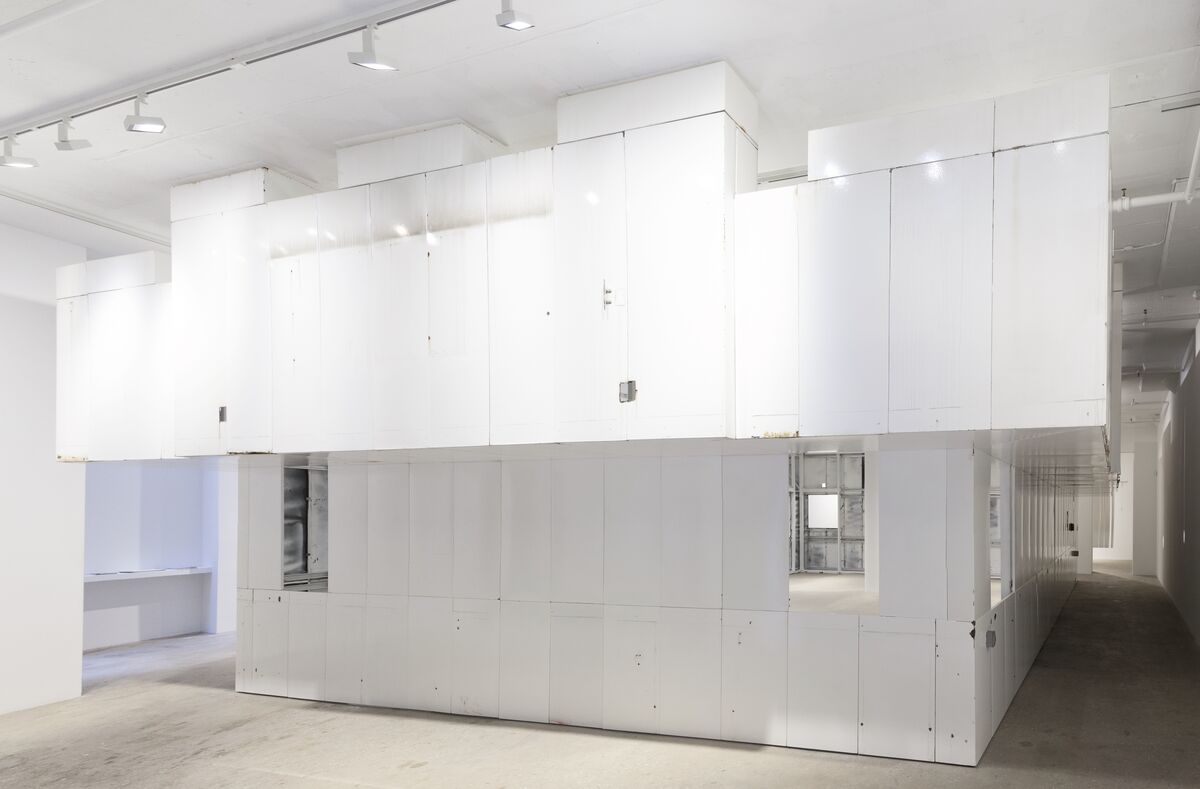
Gedi Sibony, The King And The Corpse, 2018. Courtesy the artist and Greene Naftali, New York.
If Minimalist sculpture enjoyed its heyday in the 1960s and ’70s, its major concerns still preoccupy contemporary artists. German artist
creates painted plywood boxes with light bulbs on top, a kind of Truitt-Flavin mash-up. Exhibited in a darkened gallery, the sculptures dramatically engage the space.
New York-based artist
, whose work has been described as “Minimalist assemblage,” is now exhibiting his largest sculpture to date at Greene Naftali. A found object, the façade of a prefabricated building, takes up nearly the entire gallery space. Sibony describes seeing a Judd stack in Marfa, Texas (where Judd established a studio after leaving New York), and becoming interested in the way the space between the separate boxes became alert. As for the massive new work, Sibony invokes language that recalls his conceptual Minimalist predecessors. “The work rearranges the room,” he says. “That’s its function.”
Alina Cohen is a Staff Writer at Artsy.

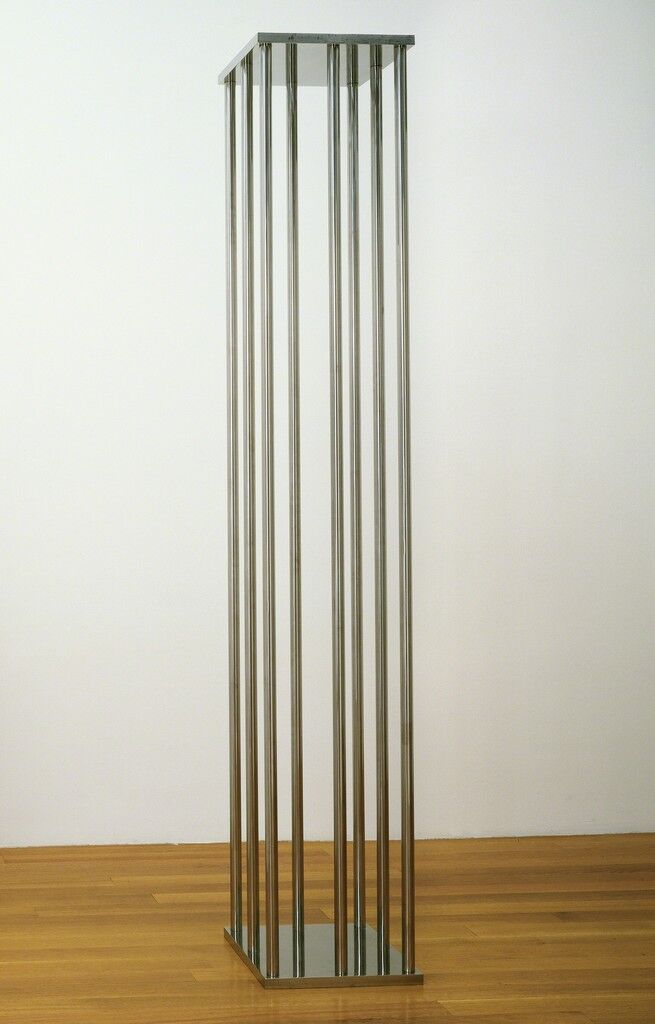

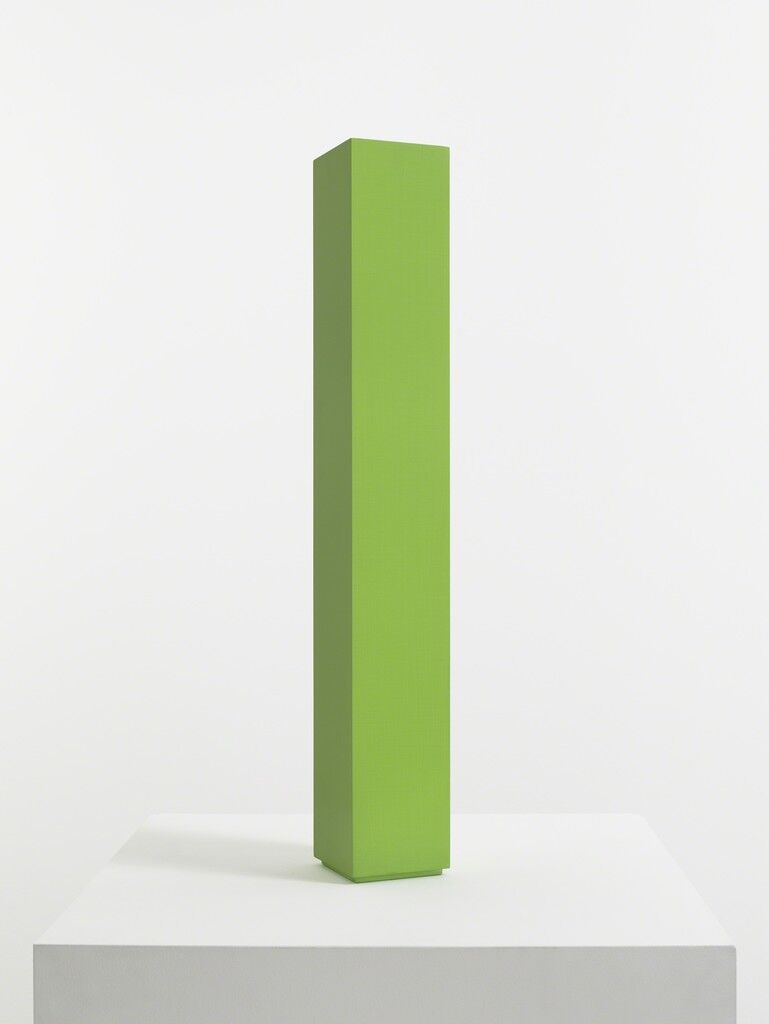
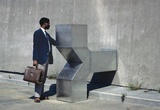
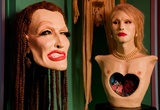

No comments:
Post a Comment